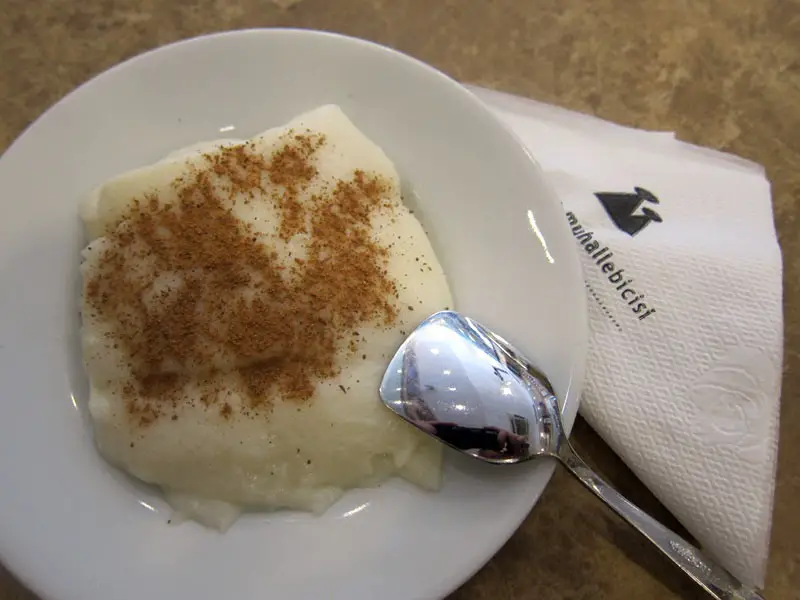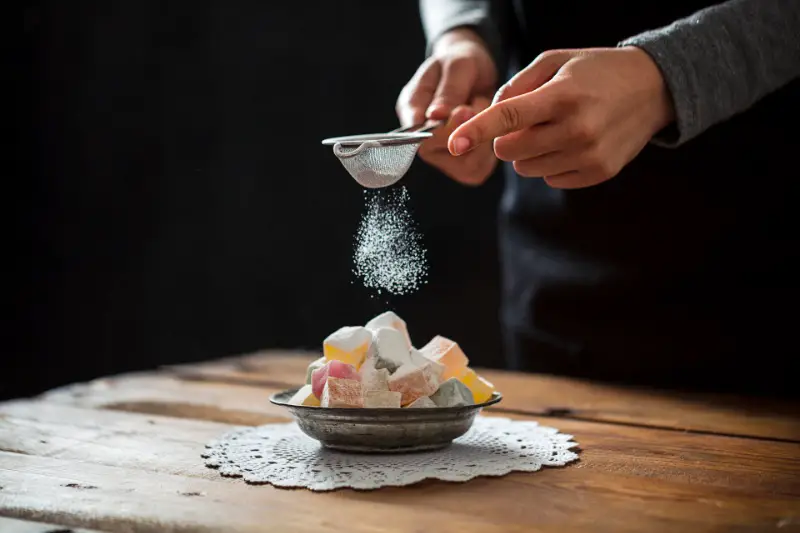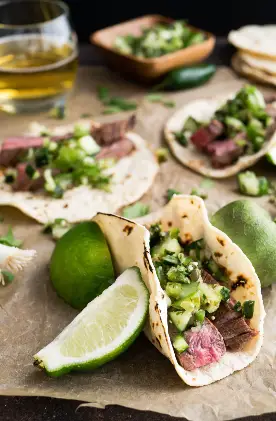When we meet folks who learn we live in Istanbul we are used to hearing a litany of praise about the country’s incredible warmth, culture and, of course, cuisine. But every once in a while, we are introduced to someone who has returned from Turkey disappointed by Turkish food. “We got tired of eating meatballs and kebabs every day,” they’ll tell us upon seeing our shocked faces (for we are stunned and concerned every time it happens).
We immediately grill them about where they stayed and ate, and make them promise to go back, being sure to give them a long list of recommendations from our site. It is our mission at Culinary Backstreets to explore the stories and food of a city and its people. To learn there are folks out there who missed out on this deep and delicious aspect of a culture has us feeling they didn’t experience the best of what Turkey has to offer.
We have been writing about Turkish food and the people who make it for over a decade. But if you’re planning a trip to Istanbul and don’t know where to start with our archive, we’ve compiled a list of our must-try Turkish dishes – as well as our favorite places to find them. And if you want to dig a little deeper into this rich history of cuisine, consider joining one of our many Istanbul food tours.
15 Must-Try Turkish Foods of Istanbul
1. Adana Kebab
We know we assured you that Turkish food is more than its meat but we can’t really start this list with anything but kebab. Istanbul is home to 15 million people and there has to be at least that many options in terms of where to find the best kebab.
The city boasts many unassuming eateries where the city’s businessmen gobble down piles of delicious grilled meat. This contrasts with the array of 24/7 hole-in-the-wall joints where you might just find the tastiest kebab of all.
However, it’s important to note that kebab is not a singular dish. Always in contention is where to eat doner (infamously dry if done poorly, which is more often than not) or whether Iskender kebab is the better option (only to be had in Bursa, its city of origin).
But the southern province of Adana is synonymous with kebab and for good reason. It’s Adana kebab, a spicy grilled skewer of ground meat, that is the most iconic and beloved style of kebab in Turkey – the champion of most hole-in-the-wall grills and upscale restaurants alike.
At Zubeyir, a lively grillhouse in Beyoglu, there always seems to be large groups of people having a very good time. The Adana kebab served at Zubeyir has just the right mix of meat, fat and red pepper. It comes to the table juicy and sizzling, and each bite melts in the mouth. Sitting by the grill is an experience all on its own, though reservations are required.

2. Kokorec
In the 1960s, kokorec was a street food favorite of just a handful of Istanbulites. Back then Istanbul had a population of just one or two million residents, of whom only a small percentage had ever heard about or tried kokorec. Ali usta, an undisputed kokorec master, informed us back in 2012 that “kokorec wasn’t found on every street corner of Istanbul in the 60s but those who knew it, loved it”.
For those who don’t know, this dish consists of stringy lamb or goat intestines wrapped around sweetbreads or other offal, and its origins stem from the Balkans. Many Albanians immigrated to Turkey, from the 16th century to the 20th century, and some of them ended up working in slaughterhouses and butchers. So this dish naturally made its way from the butchers to the streets. Kokorec is actually derived from the Albanian word “kukurec”.
Another Turkish street food dish with an Albanian backstory is Arnavut cigeri or Albanian liver. It was given this name not because it came from Albania per se but rather because it was sold on the streets by Albanians.
Kokorec’s popularity has grown over the years, as has the offal dish’s presence across the city. We find that the smell of kokorec is much more enticing than the actual bite, likely since buying a roll of kokorec is no different from buying a box of frozen hamburger patties: you call up the wholesaler. It can even be done online.
“Any kokorecci in Istanbul today who says he wraps his own rolls is lying,” Ali told us. No kokorec ustas can be found in Istanbul these days, rather you will just find guys working behind a counter. Luckily, Ali usta’s son Oguzhan is continuing the family tradition of home-rolled offal at Ozzie’s Kokorec in the Asmali Mescit neighborhood.
Ozzie’s is so popular that you have to place your order in the morning before rolling up to the tiny operation. On our first visit we arrived late, but were lucky enough to get our hands on the glorious guts. We devoured every last bit, enthralled by the smokey and earthy flavors. Although Ozzie’s requires reservations, we definitely had no reservations about the eccentric cooking styles and tastes offered up at this little eatery.

3. Hamsi (and Other Black Sea Bites)
Hamsi, or European anchovy, is a popular little fish consumed in the Mediterranean Sea and Black Sea. Nowhere – from Russia to Romania – is this anchovy fished with such passion, and cooked in such quantities and variety of ways, as in Turkey. Not only is hamsi a staple Turkish food for Turks who live by the Black Sea but it’s also the backbone of the fishing industry here, starting in Sinop and going all the way east to Rize.
There is a real sense of anticipation every year when hamsi starts to appear in the markets of Istanbul in late fall. Locals crave those Black Sea-style tastes that they can still recall from last season. Of course, hamsi is not the only dish to try at your typical Black Sea restaurant but going to one that doesn’t serve this anchovy is like heading to a BBQ and only finding coleslaw.
At Hayvore, tucked down an alley in Taksim, the food resembles something out of America’s deep south. Everything from collard greens to smoky bean stews are prepared in a home-style fashion that you would expect in the US, yet this is Turkey so hamsi is included on the menu too. The food is filling and affordable. The hamsi at Hayvore comes in a few unique styles – incorporated into corn and leek cakes, layered on top of rice or fried ready to eat as is.

4. Raki Balik
Like burgers and beer, steak and wine, college parties and tequila shots, raki balik is Turkey’s sophisticated answer to nostalgic food pairings that will always remain classics. Raki, an anise-flavored spirit much like ouzo or arak, is the essential liquid anchor to any dinner of mezes and balik (fish), as well as conversations that go long into the night at your go-to meyhane.
This tradition of drinking and dining on meze and seafood, simply called “raki balik”, is a favorite pastime of Istanbulites. A trip to Turkey without a night of raucous raki balik-ing is not a trip to Turkey at all.
One of our favorite spots in Sultanahmet (usually a hub of quality food) is Giritli, a comfortable and elegant fish restaurant that serves food favored by Turks who used to live in Crete. Here, the tables are filled with groups of locals and a few tourists taking advantage of a diverse prix fixe menu and the option to go a la carte. Octopus grilled in olive oil is the star of show, but not to be underestimated are the walnut and feta stuffed olives and the seafood salad.

Something happened to the breakfast scene in Istanbul in the last decade, and serpme kahvalti (loosely meaning “breakfast spread”) has taken over, a pastime of Eastern Turkey making its way from cities like Van and Diyarbakir.
The version found in these cities takes the Turkish breakfast food staples of bread, cheese, tomato, etc. and takes it all to dizzying new heights. From morning till late in the afternoon, brunch-goers dine on a crazy assortment of breakfast dishes, with each joint doing its best to top the other in terms of how many plates of recel (jam) or fresh breads they can present to you.
Many pinpoint this trend to Van Kahvalti Evi “Van Breakfast House” in Beyoglu’s Cihangir neighborhood. Though these days we prefer simpler offerings at institutions like Cakmak Kahvalti Salonu (one of the few places we’ll visit on Besiktas’s infamous “Breakfast Street”) or the family farm-to-table breakfast fare at Pulat Ciftligi in the ever-charming Kuzguncuk.
At Pulat, along with the standards, your breakfast comes with an assortment of local cheeses (white cheese, Izmir tulum, lor and cheeses with walnuts and oregano), bal kaymak, spreads of olives or peppers and more. Jams, fruits, and bread and butter round all this out – along with lots of strong tea. Aside from the small breakfast plates, you’ll usually be offered fried eggs or menemen, and scrambled eggs cooked with sauteed onions, peppers and tomato.

6. Menemen
If you don’t have time to spend a morning (or afternoon) lounging over a serpme kahvalti but need some kind of eggs to get your day going, menemen is your answer. This scrambled egg dish comes with most set-menu breakfasts but is often at its best at hole-in-the-walls that make only that. The scramble consists of onions, green peppers and tomatoes sauteed down to a sauce, with a few eggs tossed in at just the right moment.
We like to get our eggs at the conveniently located, no-frills Lades 2 off of Istiklal in Taksim. This restaurant is a hit with locals of the area who start their day with menemen and fried eggs with meat. We highly recommend it.

7. Simit
In 2019, the word “simit” was added to the Oxford English Dictionary and lovers of this bread rejoiced as awkward translations would become a thing of the past. This type of Turkish food is sold by street cars, roving vendors and bakeries in Istanbul and it normally comes with cheese on top for added extra taste. The recipe for simit hasn’t changed much over the centuries because there is no need to change a winning formula like this.
Simit is basically a dough rolled by hand (ideally on a marble bench top) into a long thin rod which then gets twisted into the shapes you see. It’s dipped in diluted molasses, sprinkled with sesame seeds and baked until cooked. We are always happy to pick up a simit from a street vendor to snack on while taking in the Bosporus or as a quick bite before work.
As good as the street vendors are, bakeries like Galata Simitci or Tophane Tarihi Tas Firin roll out freshly made simit throughout the day and these spots are definitely better. The latter is a family-run bakery that is known for its simit, baking it in a 130-year-old wood oven. Two Eryilmaz brothers run the shop and their easy-going nature makes buying a simit a pleasure.

8. Cig Kofte
The traditional style of cig kofte comes from the city of Urfa, in the Turkish southeast. Rumors circulated that it was invented by the Prophet Abraham – although historians can’t exactly deny or confirm that claim.
This raw-meat snack consists of uncooked ground beef, salca, bulgur, parsley, green onion, garlic and isot pepper. It was eaten for generations and many theories popped up as to why this raw-meat snack never made anyone sick. Maybe the kneading together of ingredients “cooked” the meat? No one knows but it was enjoyed widely, nevertheless.
This contention led the Turkish Health Ministry to not recommend cig kofte as a safe food to be consumed and they proceeded to outlaw it. As a result, cig kofte is now only sold at takeaway places and is no longer made with raw beef. Instead, these days, you can find vegan versions of the specialty.
Haci Besir Usta in Fatih’s Kadinlar Pazari compensates for the lack of raw meat with ground walnuts. They add the nuts to the base of bulgur, tomato paste and pepper paste. But it’s the spicing they use that gets the taste buds fired up. Pul biber is mixed in which adds heat and combines well with the isot pepper to smooth out the spice. Spring onions are the final touch before the kofte is wrapped in iceberg lettuce and drizzled with fresh lemon.

9. Lahmacun
Lahmacun is a flatbread and meat dish akin to a Middle Eastern artisanal pizza. The texture is crispy – a nod to the oven fried crust – with light toppings that make it delicious with every bite. It’s also cheap, no more than the cost of a shoeshine. Most people who try lahmacun love it but still we hear of people who don’t like it, which confuses us. Maybe they haven’t tried a good one?
When it’s created by a real usta (expert) the result is a magical mix of meats, spices and ground peppers that leave the mouth watering. Here, you’ll find our top three recommendations for lahmacun, with our go-to being Borsam Tasfirin (an Istanbul mini-chain of lahmacun ovens) in Kadikoy.
The lahmacun at Borsam’s crunches a bit before your teeth sink into a soft second layer of crust and then a third. Three crusts can be noticed with each bite, each one with a different texture. All of this formed in just a few minutes in a hot oven. This is the difference when you get an usta to cook a lahmacun. With a crust this complex and delicious, the topping is almost irrelevant.

10. Bal Kaymak
Kaymak is likely the Turkish food you will eat all day long if you make it to heaven. This divinely tasty clotted cream drenched in honey (bal) and paired with crusty white bread is one of the best breakfasts or desserts you can have in Turkey (and maybe the world). The ingredients are so simple you will be asking yourself how something this basic can taste so unbelievably good.
The milk to create the best kaymak is sourced from domesticated water buffaloes and boiled slowly until white cream forms. Once it’s cooled down for a couple of minutes, the kaymak is rolled into logs that are both liquid and solid – a creamy texture that will enchant anyone with a semblance of a sweet tooth. Boris’in Yeri near Sultanahmet is the place to go in Istanbul to try this incredible dish, a place that has a long and rich history with bal kaymak.

11. Tavuk Gogsu (Chicken Breast Pudding)
Three categories of dessert can be found in Turkish food: pastry, phyllo and milk based. The latter is what constitutes the offerings at a traditional “pudding shop” (though often there is more available to choose from). The best pudding shops serve tavuk gogsu – a pudding where chicken breast is one of the main ingredients. And no that wasn’t a typo, chicken breast is correct.
The chicken breast is included to add structure, fiber and texture to the dessert rather than flavor. It might sound like a strange dish of global cuisine in the same league as Oaxacan iguana but it’s quite tame in comparison.
That being said, we prefer a similar dish to tavuk gogsu – one which could be called its cousin, kazandibi. The caramelized bottom of the kazandibi gives it a firm and flavorsome finish. However, in the world of chicken breast puddings, elasticity is the quality that the confection is judged upon above all else.
When we visited Göreme Muhallebicisi in Kurtulus in 2013, the small shop was half-full. Three generations were sitting in the same room enjoying a pudding or something else from the menu that hadn’t changed in half a century. The kazandibi here was just as stretchy as your standard tavuk gogsu but also sweet and cool on the teeth. We were impressed by the creamy notes.

In 2013, the European Commission granted Gaziantep baklava a special protected designation. It was the first Turkish food to make the list. What a proud moment this was for Turks not only in the Gaziantep province but around the country. This type of baklava is made with pistachios grown in the province, as opposed to walnuts which are used commonly in other places.
Karakoy Gulluoglu is one of our favorite spots in Istanbul to try this now world famous pastry. The owners of this dessert shop are originally from Gaziantep. They have been serving customers close to the Bosphorus for over 70 years. Every traveler heading to Istabul should visit Karakoy Gulluoglu to enjoy a baklava on an outside table and feel the Bosphorus breeze go by.

13. Lokum (Turkish Delight)
When it comes to sweet Turkish food, lokum is perhaps the most famous around the world. Turkish delight, as it’s commonly referred to, is hit and miss depending on the type you find. If it’s mass produced, the treat is anything but delightful. However, lokum done properly will have you hooked and you will never settle for anything apart from the best after that experience.
The Altan Sekerleme store in Istanbul is a feast for the eyes when it comes to lokum. Visiting this shop is literally like being a kid in a candy store. Make sure you try the rosewater flavor – the most sensual of all Turkish delight tastes. Other flavors such as the hazelnut and chocolate ones are also delectable.
This shop opened in 1865 and the sense of history here is palpable. It’s a far cry from the polished stores selling standard Turkish delight in characterless ways. Although, if you find a box of Marsel delight somewhere, do buy it because they use similar recipes to Altan Sekerleme.

14. Ayran
Ayran (a yogurt drink) is a Turkish food that you will get the chance to enjoy all over the country. But at Babo’nun Yeri, a restaurant in Istanbul, the liquid white gold drink is perhaps the best in all of Turkey. Here it’s created to be frothy, salty and yogurty – making it an ideal after-dinner treat to wash down your meal. You might not be able to stop at just one, as Bedir Usta told us back in 2013, “Some people have four or five bowls of ayran with every meal”.
Bedir makes this home-brewed style yogurt drink at the restaurant and is always surprised by how much gets consumed every night. At Babo’nun Yeri, ayran is served in a bowl which is the most traditional way – but in other areas of Turkey it is simply delivered in a cup. Bedir Usta informed us that the all natural ingredients used are what really makes the difference between a good ayran and a great ayran.

15. Turkish Coffee
Finding a cup of coffee in Turkey can be notoriously difficult, despite the fact that Turkish coffee (the real stuff) is one of the most enjoyed beverages in the country. Some tourists come here and complain about the watery and weak flavors until they come across a proper coffee made by a master. One person who you can trust on the coffee front is Cemil Pilik, the late brewmaster at Mandabatmaz – a small cafe that makes one of Istanbul’s best cups.
He thinks that real Turkish coffee should be creamy and thick, and only the freshest roasted beans ought to be deployed. He would get his beans delivered everyday in a clear plastic bag, with a sense of mystique around where it came from. “It’s roasted just for us”, Cemil Pilik told us back in 2014. Upon opening the bag of beans, the aromas filled the air and we knew straight away that a delightful cup of Turkish coffee would be on its way.
























